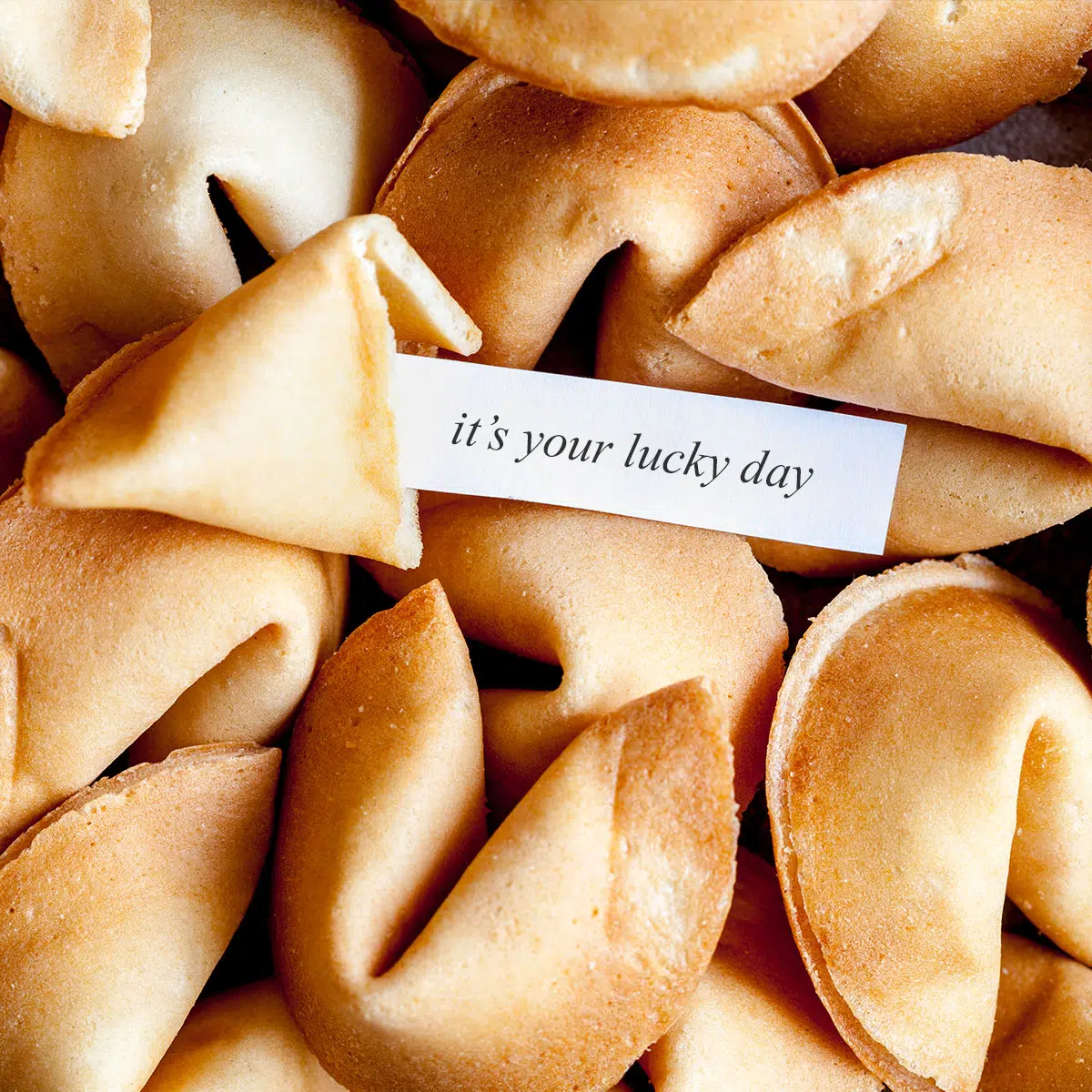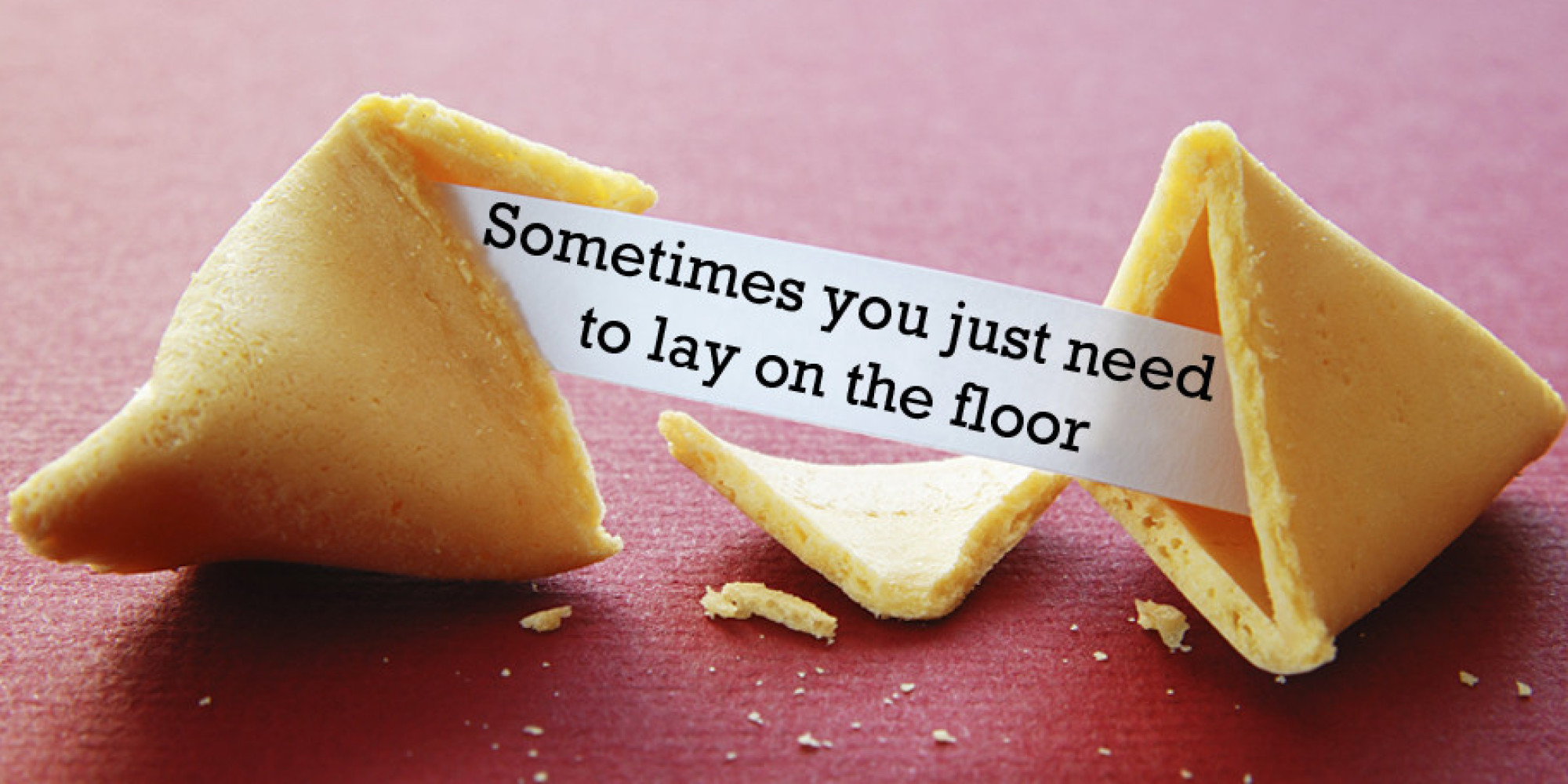Fortune Cooky – Fortune Cookie: More than a sweet treat, this seemingly simple dessert holds a fascinating history, steeped in cultural exchange and evolving perceptions. From its debated origins to its global ubiquity, the fortune cookie’s journey is a captivating blend of myth, manufacturing, and modern media influence. This exploration delves into the cookie’s surprising past, its present-day impact, and its uncertain future.
This article unravels the mysteries surrounding the fortune cookie, examining its evolution from humble beginnings to its current status as a global phenomenon. We explore its cultural significance, manufacturing processes, and portrayal in popular culture, offering a comprehensive overview of this iconic confection.
Fortune Cookie History and Origins

Source: nationaltoday.com
The seemingly ubiquitous fortune cookie, a crispy wafer containing a cryptic message, holds a surprisingly complex and debated history. Its origins are far from clear-cut, with competing narratives and cultural influences intertwining to create a fascinating story of culinary and cultural adaptation.
Early Theories and Development
While often associated with Chinese culture, the fortune cookie’s origins are not definitively Chinese. Several theories exist, including its potential Japanese origins in the early 20th century, possibly evolving from Japanese tsujiura senbei (fortune crackers). Another theory suggests its development in the United States, possibly in California, as a confectionery item served in Japanese tea rooms. These early versions differed significantly from the modern cookie, both in terms of shape and the nature of the message inside.
Cross-Cultural Variations
The fortune cookie tradition has spread globally, adapting to local customs and preferences. While the basic format remains consistent – a crisp, folded cookie containing a printed message – variations exist in size, shape, and even the type of messages included. For instance, messages in Asian countries may reflect more traditional philosophies, while those in Western nations might be more focused on luck, love, or general motivational statements.
A Fortune Cookie Timeline
A clear timeline is difficult to establish due to conflicting accounts. However, key milestones might include:
- Early 1900s: Potential emergence of fortune crackers in Japan.
- Early to Mid-1900s: Appearance of fortune cookies in Japanese tea rooms in the United States.
- Mid-1900s onward: Widespread adoption of fortune cookies in Chinese restaurants across America, solidifying its association with Chinese cuisine.
- Late 20th and early 21st centuries: Globalization of the fortune cookie, with variations appearing worldwide.
Fortune Cookie Content and Messaging
The messages within fortune cookies are a key element of their appeal, offering a brief moment of reflection or amusement. These messages are typically short, pithy pronouncements that can be categorized into several thematic groups.
Message Themes and Cultural Significance, Fortune Cooky
Common themes include love and romance (“You will meet someone special soon”), luck and fortune (“A stroke of luck is coming your way”), and wisdom and advice (“Patience is a virtue”). The cultural significance of these messages lies in their ability to provide a small dose of hope, optimism, or guidance, offering a brief escape from daily life. The messages themselves often reflect the prevailing cultural values and beliefs of the time and place of their creation.
Modern Fortune Cookie Messages

Source: huffpost.com
Reflecting contemporary societal concerns, here are five unique fortune cookie messages:
- Embrace your authentic self; the world needs your unique perspective.
- Kindness is a superpower; use it wisely.
- Invest in your mental well-being; your mind deserves care.
- Sustainable choices build a better future; make a conscious effort.
- Embrace change; it is the only constant.
Cross-Cultural Message Comparison
| Culture | Common Message Themes | Examples | Cultural Context |
|---|---|---|---|
| United States | Love, luck, general advice | “A fresh start is in your future.”, “You will find unexpected happiness.” | Focus on optimism and self-improvement. |
| Japan | More poetic and philosophical | “The wind whispers secrets to those who listen.”, “Find beauty in simplicity.” | Emphasis on nature, spirituality, and mindfulness. |
| China | Vary widely, reflecting diverse philosophies | Messages can range from traditional proverbs to modern motivational statements. | Reflects the broad range of Chinese cultural and philosophical traditions. |
| Other Cultures | Adapted to local customs and beliefs | Messages often reflect local proverbs, idioms, or cultural values. | Demonstrates the adaptability of the fortune cookie tradition. |
Fortune Cookie Manufacturing and Distribution
The seemingly simple fortune cookie belies a surprisingly intricate manufacturing process, ranging from small-scale artisanal production to large-scale industrial operations.
Manufacturing Process
The process generally involves mixing flour, water, sugar, and oil to create a dough. This dough is then rolled thinly, cut into circles, baked briefly, and while still warm, folded into the characteristic crescent shape. A printed fortune slip is inserted before the final fold. Packaging varies, from simple cellophane bags to more elaborate containers.
Production Scales and Key Players
Fortune cookie production ranges from small, family-run businesses to large factories capable of producing millions of cookies annually. Identifying specific market leaders is difficult due to the fragmented nature of the industry, with many smaller businesses operating alongside larger producers. Distribution channels are equally diverse, encompassing direct sales to restaurants, wholesale distributors, and even online retailers.
Making Fortune Cookies from Scratch
While the industrial process is complex, making fortune cookies at home is surprisingly straightforward. A simple recipe involves combining 1 cup all-purpose flour, 1/4 cup sugar, 1/4 teaspoon salt, 1/4 cup vegetable oil, and 1/2 cup warm water. The dough is rolled thin, cut into circles, baked until lightly browned, and then quickly folded while still warm around a small slip of paper containing a fortune.
Fortune Cookie Cultural Impact and Perception
The fortune cookie’s global presence has significantly impacted perceptions of Chinese and broader Asian cultures. Its association with Chinese restaurants, however, is largely a product of its widespread adoption in the United States, rather than a reflection of authentic Chinese culinary traditions.
Misconceptions and Cultural Appropriation
A common misconception is that the fortune cookie is a traditional Chinese food. This association is largely a result of its widespread presence in Chinese-American restaurants. The reality is that the fortune cookie is a distinctly American invention, albeit one with roots in other East Asian culinary traditions. This misattribution represents a form of cultural appropriation, where a cultural element is adopted and presented as belonging to a different culture.
Global Distribution and Cultural Appropriation
Imagine a world map. The most densely populated areas, especially in North America, Europe, and parts of Asia, are shaded a deep red, representing the widespread availability of fortune cookies. Lighter shades of red indicate areas with less frequent presence. The intensity of the color represents the degree of cultural integration – deeper shades indicating a stronger association with specific cultural events or holidays, while lighter shades represent a more casual or less meaningful integration.
Fortune Cookie in Popular Culture and Media
The fortune cookie’s unique nature has made it a recurring motif in popular culture, appearing in various forms of media and often serving as a symbolic element in storytelling.
Prominent Media Appearances
- Films: Fortune cookies have appeared in countless films, often used for comedic effect or as a plot device to introduce a message or foreshadow an event.
- Television Shows: Similarly, television shows have utilized fortune cookies for humor, symbolism, or to advance storylines.
- Literature: Fortune cookies have also been incorporated into literature, used to add a touch of whimsy or to provide a brief moment of reflection.
These media portrayals have, in turn, influenced public perception, often reinforcing the already established (albeit inaccurate) association with Chinese culture.
The Future of the Fortune Cookie: Fortune Cooky
The future of the fortune cookie industry hinges on its ability to adapt to changing consumer preferences and address potential challenges.
Innovations and Challenges
Potential innovations include exploring different flavors, incorporating sustainable ingredients, and offering more personalized or interactive fortune messages. Challenges include maintaining relevance in a competitive market and addressing concerns surrounding cultural appropriation and ethical sourcing of ingredients. Strategies for overcoming these challenges involve promoting transparency, embracing sustainable practices, and emphasizing the fun and playful aspects of the fortune cookie experience.
Fortune Cookie fortunes, often dismissed as frivolous, can surprisingly offer a glimpse into human emotions, mirroring the sentiments expressed in heartfelt obituaries. For a deeper understanding of how communities process grief and celebrate lives, explore the wealth of information found in resources like silva faria funeral home obituaries the essential resource for recent tributes exposed the secrets you cant miss , which reveal the complexities of human experience.
Ultimately, both fortune cookies and obituaries offer fleeting moments of reflection on life’s journey.
A Sustainable Future
A sustainable approach to fortune cookie production might involve using locally sourced, organic ingredients, minimizing packaging waste, and exploring innovative methods of reducing energy consumption throughout the manufacturing process. Ethical considerations include ensuring fair labor practices throughout the supply chain and promoting transparency about the origins of ingredients and manufacturing processes.
Concluding Remarks
The fortune cookie, a seemingly insignificant dessert, reveals a rich tapestry of cultural exchange, manufacturing ingenuity, and evolving perceptions. Its journey from uncertain origins to global icon showcases the power of cultural appropriation and the enduring appeal of simple pleasures with a touch of mystery. While its future remains unwritten, the fortune cookie’s lasting impact on global culture is undeniable.
